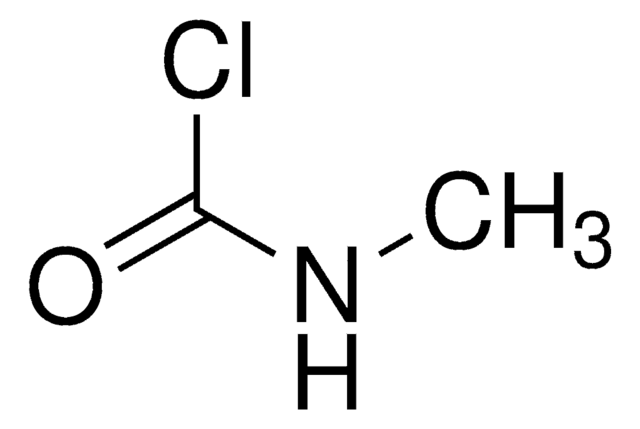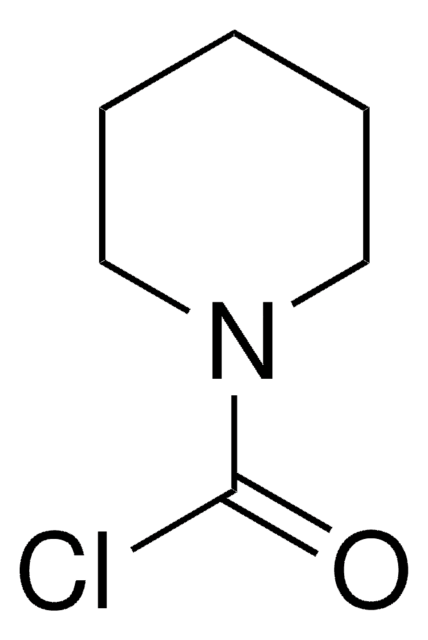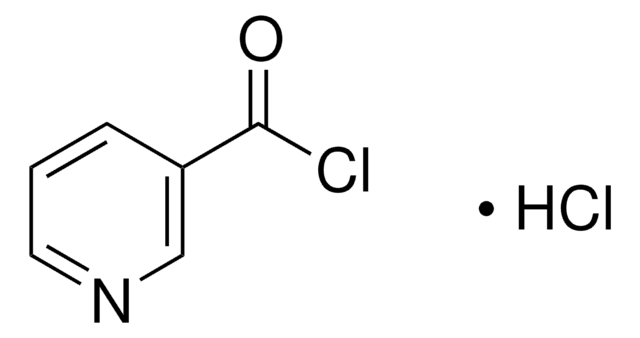D152803
Dimethylcarbamyl chloride
98%
Synonym(s):
Chloroformic acid dimethyl amide, Dimethylcarbamoyl chloride
About This Item
Recommended Products
Assay
98%
form
liquid
refractive index
n20/D 1.453 (lit.)
bp
167-168 °C/775 mmHg (lit.)
mp
−33 °C (lit.)
density
1.168 g/mL at 25 °C (lit.)
SMILES string
CN(C)C(Cl)=O
InChI
1S/C3H6ClNO/c1-5(2)3(4)6/h1-2H3
InChI key
YIIMEMSDCNDGTB-UHFFFAOYSA-N
Related Categories
Application
- Disubstituted carbamates from benzylphenols.
- 2-Cyanoisonicotinamide by reacting with isonicotinic acid N-oxide and zinc cyanide. This method was adopted to synthesize a novel xanthine oxidoreductase inhibitor.
- Acetylcholinesterase (AChE) and serotonin transporter (SERT) dual inhibitors.
Signal Word
Danger
Hazard Statements
Precautionary Statements
Hazard Classifications
Acute Tox. 3 Inhalation - Acute Tox. 4 Oral - Carc. 1B - Eye Irrit. 2 - Skin Irrit. 2 - STOT SE 3
Target Organs
Respiratory system
Storage Class Code
6.1C - Combustible acute toxic Cat.3 / toxic compounds or compounds which causing chronic effects
WGK
WGK 3
Flash Point(F)
179.6 °F - closed cup
Flash Point(C)
82 °C - closed cup
Personal Protective Equipment
Certificates of Analysis (COA)
Search for Certificates of Analysis (COA) by entering the products Lot/Batch Number. Lot and Batch Numbers can be found on a product’s label following the words ‘Lot’ or ‘Batch’.
Already Own This Product?
Find documentation for the products that you have recently purchased in the Document Library.
Customers Also Viewed
Our team of scientists has experience in all areas of research including Life Science, Material Science, Chemical Synthesis, Chromatography, Analytical and many others.
Contact Technical Service













